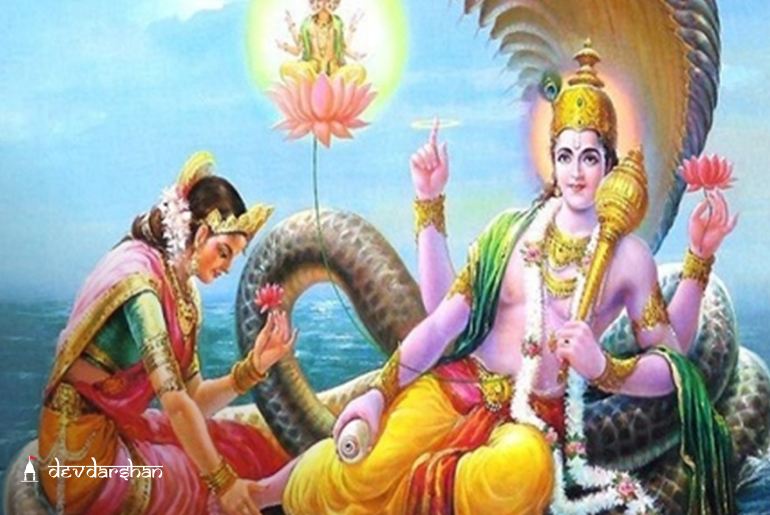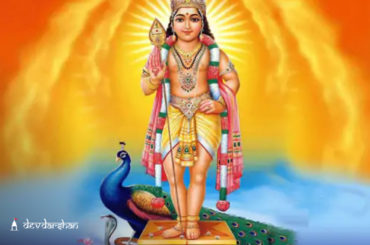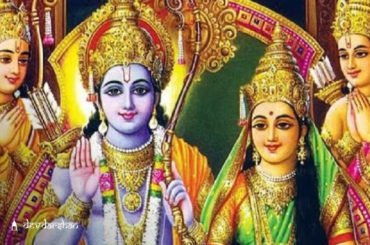Adhik Maas, also known as Purushottam Maas or Mal Maas, is an additional lunar month that occurs in the Hindu lunar calendar approximately once every three years. ‘Adhik’ means ‘extra’ or ‘additional’ in Sanskrit. It is inserted to harmonize the lunar calendar with the solar calendar, as the lunar year consists of approximately 354 days, while the solar year consists of approximately 365 days.
Adhik Maas is considered a unique and auspicious month in Hinduism. It does not have a specific ruling deity like other months, but Lord Vishnu is often associated with this extra month. It is believed that Lord Vishnu himself resides in Adhik Maas and bestows blessings upon his devotees during this time.
Adhik Maas is considered a spiritually significant period for self-reflection, penance, and performing religious activities. Devotees engage in extra devotional practices, such as performing additional prayers, fasting, studying sacred texts, and engaging in acts of charity. It is seen as an opportunity for spiritual growth, cleansing of sins, and seeking the grace of the divine.
The observance and practices during Adhik Maas may vary based on regional customs and personal beliefs. While it is not universally recognized or celebrated in all regions of India or by all sects of Hinduism, it holds special importance for those who choose to observe and participate in the rituals and spiritual practices associated with this additional lunar month.
Also Read: Importance of Lord Vishnu Puja during Adhik Maas
So, let’s get to know more about the Date, Rituals and Significance of Aadhik Maas 2023.
Adhik Maas 2023: Date, Muhurat and Timings
This year, Adhik Maas will start on Tuesday, July 18, 2023 and ends on Wednesday, August 16, 2023
- Adhik Maas: July 18, 2023
- Adhik Maas: August 16, 2023
Find Out Date and Muhurat of Adhik Maas Purnima 2023
Significance of Shravan Adhik Maas
Adhik Maas is considered a sacred month and is known by various names such as Londa Maas, Purushottama Maas, Mal Maas, and more.
In Hinduism, each month is associated with a specific deity. However, initially, Adhik Maas was not included in the 12 months. Adhik Maas appealed to Lord Vishnu to grant it a place in the calendar. Responding to its plea, Lord Vishnu allowed Adhik Maas to become a part of the calendar.
Adhik Maas is considered holy because it is believed that engaging in virtuous deeds, prayer, and spiritual practices during this month can lead to the redemption of sins for individuals. It is seen as an auspicious time for spiritual growth and seeking forgiveness.
According to Vedic Puranas, the human soul is composed of the elements of water, air, earth, fire, and sky. Practices such as meditation and Yoga can assist in harmonizing these elements within the body. Engaging in religious activities during the entire month of Adhik Maas can aid in purifying and enhancing both spiritual and physical energy. This special month, which occurs approximately once every three years, serves as an opportunity for rejuvenation and renewal. Additionally, it is believed that maintaining a religious involvement during this time can help resolve Kundali Dosha, a particular astrological alignment that is considered unfavourable.
Also Read: Importance of Graha Shanti Puja during Adhik Maas
Adhik Maas Purnima 2023 Rites and Rituals
During Adhik Maas, devotees observe various rituals and practices to enhance their spiritual growth and seek blessings. Here are some common rituals followed during Adhik Maas.
Vishnu Puja: Worshiping Lord Vishnu is considered auspicious during Adhik Maas. Devotees offer prayers, perform aarti, and recite Vishnu mantras to seek His blessings and grace.
Fasting: Observing fasts during Adhik Maas is believed to be highly beneficial. Devotees may choose to observe complete fasts or partial fasts by consuming only specific types of food. Fasting is considered a form of self-discipline and a means of purifying the body and mind.
Charity and Donation: Engaging in acts of charity and donating to the needy is considered virtuous during Adhik Maas. Offering food, clothes, or other essentials to the less fortunate is believed to earn merits and blessings.
Study of Sacred Texts: Devotees dedicate time to studying sacred scriptures like the Vishnu Purana, Srimad Bhagavatam, Bhagavad Gita, or other spiritual texts during Adhik Maas. Reflecting on the teachings and wisdom contained in these texts deepens spiritual understanding.
Japa and Mantra Chanting: Chanting of Vishnu mantras or performing japa (repetition) of sacred mantras associated with Lord Vishnu is a common practice during Adhik Maas. This practice helps in focusing the mind and invoking divine energy.
Pilgrimage and Holy Dip: Many devotees undertake pilgrimages to sacred places and take holy dips in rivers, especially the Ganges, Yamuna, or other sacred water bodies. Bathing in these rivers during Adhik Maas is believed to cleanse the soul and wash away sins.
Performing Homas and Havans: Conducting homas (fire rituals) and havans (sacred fire ceremonies) dedicated to Lord Vishnu or other deities is considered auspicious during this month. These rituals involve offering ghee, herbs, and other sacred materials into the fire while reciting mantras.
Devotional Practices: Engaging in devotional practices like singing bhajans (devotional songs), participating in satsangs (spiritual gatherings), and attending religious discourses are encouraged during Adhik Maas.
It’s important to note that specific rituals and practices may vary based on regional customs, personal beliefs, and the guidance of spiritual leaders. Following these rituals with devotion, sincerity, and a pure heart is believed to bring spiritual benefits and blessings during Adhik Maas.
Also Read: Rituals to Follow During Shravan Maas
Mythological Legends Related to Adhik Maas
Let’s find here some of the famous mythological stories related to Adhik Maas.
Adhik Maas, also known as Mal Maas, Londa Maas, or Purushottama Maas, holds great significance in Hinduism. It is believed to have the power to absolve people of their sins. The lunar calendar consists of 12 months, and to align it with the solar calendar, the rishis and munis included the extra month known as Adhik Maas. However, Adhik Maas was initially overlooked as each of the 12 months represented a specific deity. The plight of Adhik Maas, also called Mal Maas or Malimmucha, was presented to Lord Vishnu, who took compassion and assigned Himself to this additional month, renaming it Purushottama Maas. Since then, Adhik Maas has gained more significance than the other months.
Another legend goes like this. In ancient times, King Nahush was freed from his bondages and ascended to the throne of Indra, the king of the gods and ruler of the heavens, through the observance of Mal Maas Vrat.
During Adhik Maas, various religious rituals are performed, including fasting, recitation of scriptures, mantra japa, prayers, puja, and havans. Different types of vratas (fasts) are observed based on an individual’s capacity, ranging from full-day fasts to weekly or fortnightly fasts. These rituals help in purifying one’s soul and washing away accumulated sins from this life and past lives.
Observing a fast during Adhik Maas is believed to be equivalent to performing a hundred yagyas (sacred fire rituals) and brings happiness, peace, and harmony. The purpose of following this vrat is to appease the deities, fulfil desires, attain health and wealth, receive blessings, overcome difficulties, and break the cycle of rebirth.
Engaging in good deeds (satkarmas) during Adhik Maas helps in mastering the senses, eliminating miseries, and escaping the cycle of rebirth (punar janam).
Overall, Adhik Maas is a sacred month that offers devotees the opportunity to seek spiritual growth, cleanse their souls, and seek blessings from the divine through various rituals and acts of devotion.
About DevDarshan
Check out various Online Puja and services provided by DevDarshan here and get your bookings done in one click. If you want to know more about Indian culture, Indian Temples, Pujas and festivals, then download the DevDarshan App. Don’t forget to share this blog if you liked.




